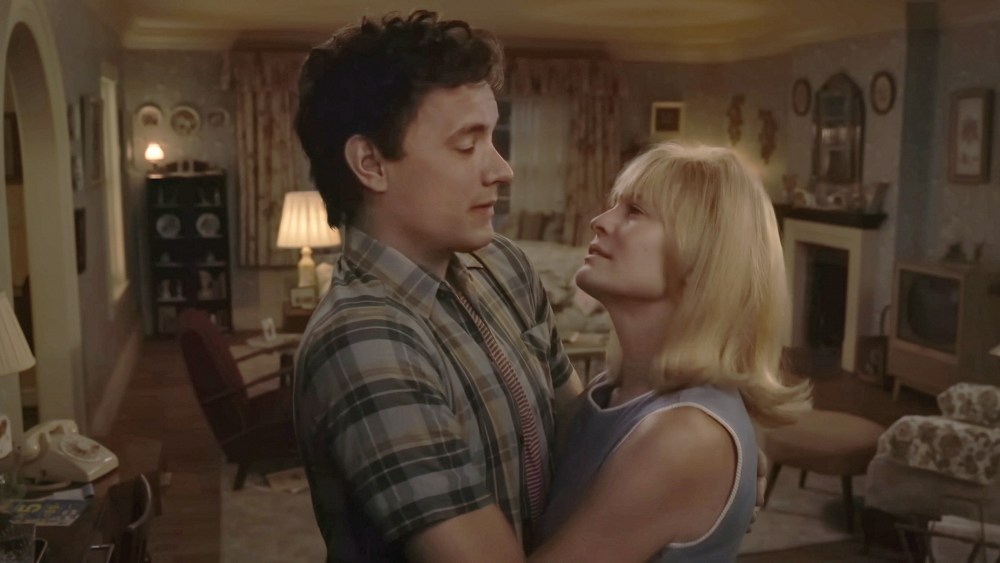AI Takes Center Stage at HPA Tech Retreat
It was fitting that the acquisition of generative AI tech company Metaphysic by DNEG Group’s Brahma AI arm was announced on Tuesday, as a large part of the annual HPA Tech Retreat – which was held this week in Palm Springs – was largely dedicated to AI and this deal underscored several of the predicted trends, including convergence.
“Convergence is one of the main things that we will see in 2025,” I2A2 president and CEO Renard Jenkins forecasted, while showing a slide with a lengthy list of just some of the AI startups that are targeting the media and entertainment space. “That can be good and bad, because if your favorite tool gets purchased by someone who intends to maybe keep it under wraps or they fully don’t understand its value, then all of a sudden you’ve got to learn something new. That changes your workflow, what happens in your development, where things are going to go.”
Metaphysic has already made an impression in the VFX space — notably its toolset was used to age and deage Tom Hanks and Robin Wright in Robert Zemeckis’ “Here” — an application that last week won a Visual Effects Society Award in its emerging technology category.
According to DNEG Group, the Metaphysic deal is about creating tools for a range of industries, but VFX is clearly a critical part, particularly as DNEG Group also encompasses VFX giant DNEG, whose work on “Dune: Part Two” is currently nominated for an Oscar. At HPA, Jenkins reported that in the AI media and entertainment space, “the most impacted areas right now are visual effects and sound.”
During another session, VFX vets Barbara Ford Grant and Daniel Kramer discussed what they learned creating a personal project, titled “Unhoused,” using various AI tools. Ford Grant described the “iterative cycle where we layered in different AI tools throughout the entire process. And so we were kind of iterating development, preproduction, production and post.” AI tools ranged from Runway to Midjourney.
Kramer, a VFX supervisor at Sony Pictures Imageworks, discussed some lessons learned. “We really need a lot more control in visual effects,” he said, citing areas such as facial animation, lip syncing and compositing. “I really am looking for these tools that sort of help enable the artists and help us, you know, work a little bit faster, a little bit better.”
Speaking more broadly about filmmaking, director David Slade (“30 Days of Night,” “The Twilight Saga: Eclipse”) said, “It’s not the AI that makes the film. It’s the human with the idea and the structure.” He added that all of his prior experience has been useful in his AI-applied work, “not because I want to make copies of other films in a different way, but just because the form persists. The cinematic language we’ve had for a hundred or so years persists in this space.”
Slade also believes AI will be a factor in launching new channels, and these “new ways to distribute are going to allow weird or odd movies … that aren’t necessarily for everybody, but that have a niche. Niche movies will be possible.”
Filmmakers representing some new studios enabled by AI also shared perspectives. Filmmaker Dave Clark, who is co-founder and chief creative officer at Promise, described the development of Promise’s Muse proprietary software and workflow layer. “That’s going to be able to move at the speed of AI,” he said, adding, “We want to build a creative production pipeline that allows us to always, constantly shift and move as the technology evolves. Because I do believe that technology will keep evolving, at least for the rest of my career.” Promise was founded last fall with investment from Peter Chernin at North Road and Andrew Chen at Andreessen Horowitz.
Walter Woodman of Shy Kids, the team behind the “Air Head” short made with OpenAI’s Sora, warned, “I think that when people talk about AI, they talk about faster and cheaper. And I think that’s a horrible way to think about things. I think that my job is to make things that were previously impossible.
“What we’re trying to be is Pixar. What we’re trying to compete with is Disney. And I think what I like most about AI is that it has the promise that we can actually compete with those guys,” he declared, adding “We’re looking for our Steve Jobs.”
A range of additional, sometimes opposing, views were also presented during the retreat, including in presentations by Hasso Basse — chief technology officer of AI tech developer Stability AI, whose board members include James Cameron — and Society of Motion Picture and Television Engineers president and Deluxe vice president Richard Welsh.
Amid these conversations, Hollywood jobs remain a critical concern, driving the 2023 double labor strikes. But Jenkins contends that his research, including that from the World Economic Forum, suggests that business owners (though not specific to filmmaking) “would rather reskill their existing employees or upskill their existing employees.” He elaborated, “What that means is that if anybody is telling you that AI is going to replace the worker, AI is going to replace the artist, AI is going to replace, replace, replace – I would theorize that that person is extremely misguided as to how these tools and how these systems should be used, and how they can be most impactful.
“Upskilling is the way forward,” he said, suggesting education and urging, “for those of you who are concerned about where our industry is going, don’t wait.”


